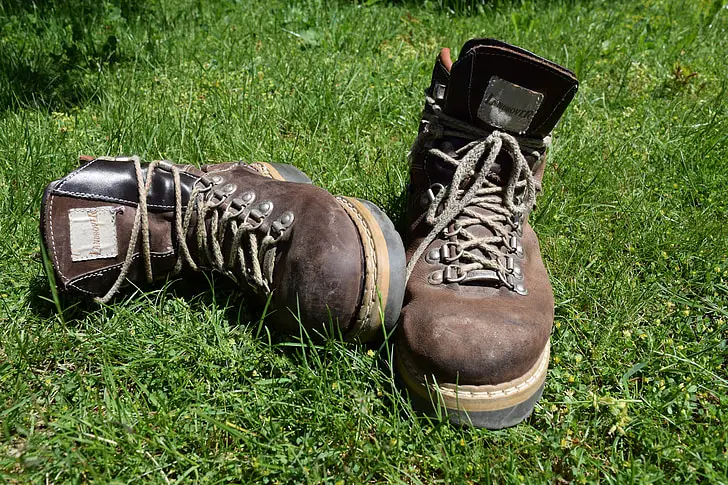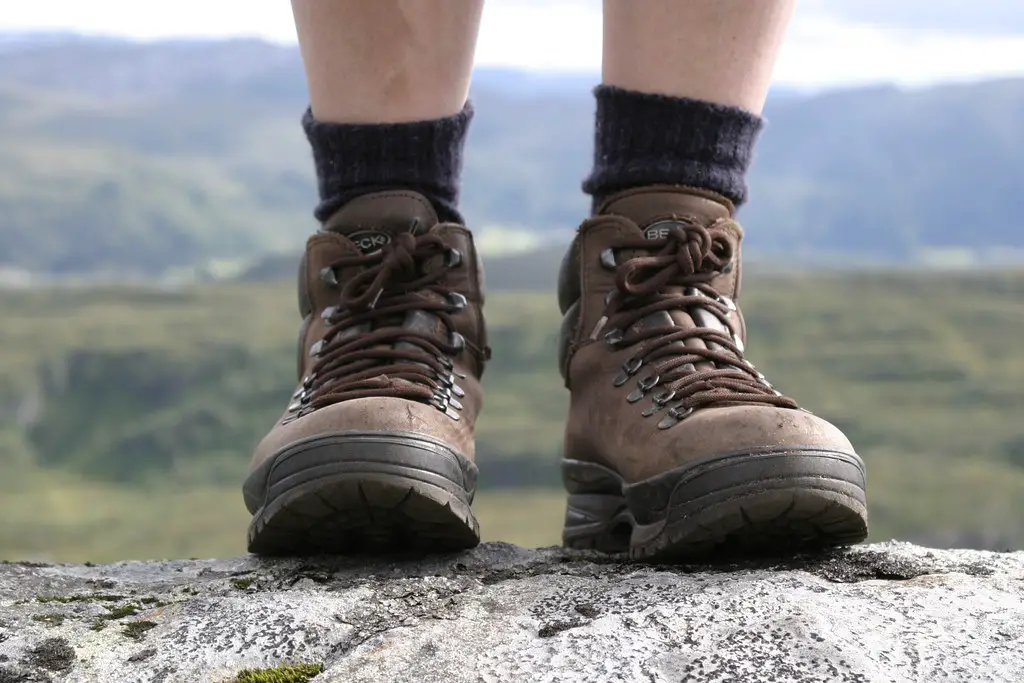The main thing to know when deciding between hiking boots vs work boots is that hiking boots offer better support on uneven ground due to their increased flexibility. Work boots are typically heavier and stiffer than hiking boots, allowing better protection against punctures, cuts, and hard impacts. You can certainly wear work boots when hiking, but you’ll want to make sure the soles of your work boots have a good grip to them.
If you’re looking to go hiking but don’t have a dedicated pair of hiking boots, your current pair of work boots should do the trick just fine. There are a few things to pay attention to, however. Read on for what to consider when choosing hiking boots vs work boots.

The Difference Between Hiking Boots And Work Boots
There are a few key differences between hiking boots and work boots, and choosing the right one can make a huge impact on your experience depending on which activity you’re doing. Let’s break down the major points to consider when choosing hiking boots vs work boots.
Weight
The weight of a hiking boot is much lighter than a work boot, and this weight can really make a huge impact on the enjoyability of your hike. Work boots are designed for safety and injury prevention, so features like steel toe are often included, which add extra weight.
Hiking boots are usually equipped with rubber toe caps which will still provide the bump and abrasion protection you need. The added weight of a work boot will add to the amount of energy you spend on your hike, so pay close attention to the total weight if using a work boot on your hike.
Traction
Most hiking boots include grooves and patterns that are designed to provide extra grip or traction on a variety of surfaces. Work boots usually feature simpler sole patterns with shallower indentations, offering a bit of slip resistance, but not nearly the amount of grip that most hiking boots will offer.
Consider the type of trails you’ll be hiking, along with what ground conditions and weather you’ll be hiking in, as hiking boots offer much better performance – especially in wet, snowy, or muddy conditions.
Flexibility
The soles of work boots are designed with protection and puncture-resistance in mind. This typically means that they have stiff rubber soles for safety. Although this is a great safety feature, it’s not such a great feature when hiking. The rigid soles of a work boot will reduce your grip on uneven terrain, affecting your stability.
Comfort
Hiking boots are designed to keep you comfortable over long distances, and the materials hiking boots are made from are designed to absorb shocks as you hike. Simply put, most work boots will not provide extended comfort for longer hikes.
Waterproofing
Depending on the terrain you’ll be hiking, you may encounter streams or other bodies of water that you’ll be crossing. Most of today’s hiking boots offer waterproofing and quick-drying capabilities, allowing the boot to dry as you continue to hike. Most work boots may be water resistant, but will absorb more water and take longer to dry than hiking boots will.
Ankle Support
Ankle support in hiking boots vs work boots is a very important factor to consider, especially if you’ll be carrying a backpack. Depending on your needs, hiking boots can come in versions that support you with a low, mid, or high-cut profile, as where work boots almost exclusively offer high-cut protection.

Hiking Boots vs Work Boots – Frequently Asked Questions
Can I Go Hiking In Work Boots?
You can certainly hike in your work boots – we typically advise that a hike here or there is fine, and the flatter the trail, the better. If you find yourself hiking more than once or twice a year, it’s a great idea to invest in some hiking boots.
What Kind Of Hikes Are Good To Use Work Boots For?
Typically, short and simple hikes are fine for using work boots. If you’ll be crossing water, or hiking on muddy or wet terrain, we highly recommend using hiking boots.
What Are The Best Work Boots For Hiking?
If you’re looking for a great work boot that also offers the best of a hiking boot, we recommend the Irish Setter Afton, Dickie’s Escape Hiker, and Columbia Newton Ridge Plus li hiking work boots. These options give you a great hiking work boot for every budget.
Do Hiking Boots Meet OSHA Guidelines?
Generally, hiking boots are not OSHA approved – OSHA and ATSM standards are specific in nature to work environments, and thus don’t apply to hiking boots. However, that doesn’t mean that hiking boots aren’t meant to protect your feet. Hiking boots offer sole protection, grip, toe protection, and ankle support, which are the key safety features you should consider when choosing a hiking boot.
Wrapping Up Hiking Boots vs Work Boots
Ultimately, if you see yourself hiking more than once or twice a year, it’s time to pick up a pair of dedicated hiking boots.
The traction, weight, flexibility, and waterproof features of hiking boots will make your hikes more enjoyable and allow you to stay on the trail longer.
While you’re here, check out how much toe room is needed in hiking boots and our guide on if Doc Martens are good for hiking for extra tips on how to maximize the fit and comfort of your boots.


